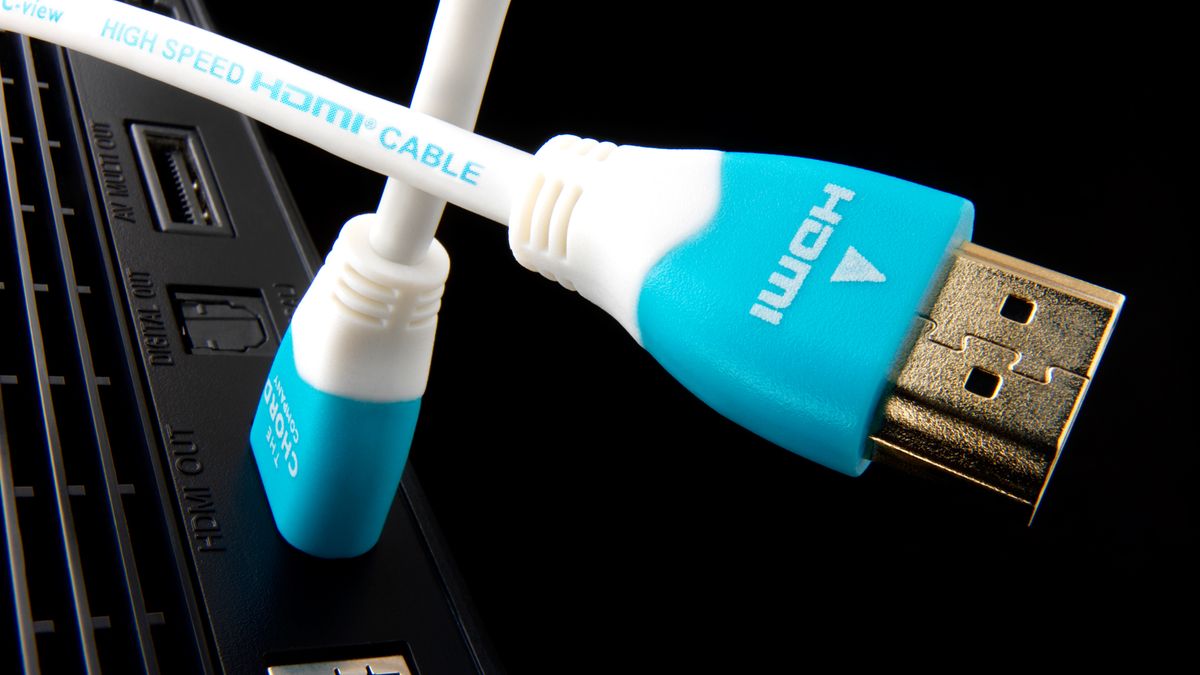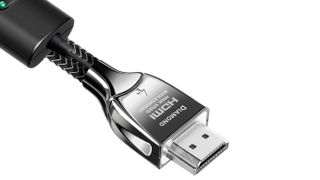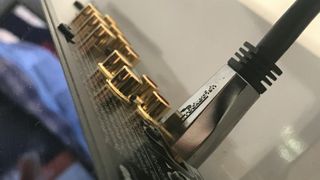
There's a certain visual irony in the fact that any discussion about cables is akin opening a can of worms. Few tech topics rile folks more than interconnects. Small wonder, given that cable prices run the gamut from bargain basement to penthouse suite, despite all doing fundamentally the same job.
Well, we're here to tell you that your choice of HDMI really does make a difference, but maybe not in ways you might first imagine...and that 8K is about to throw another spanner in the works.
HDMI (High-Definition Multimedia Interface) cables have been a hot potato for years now, thanks mainly to early price gouging from retailers. Keen to supplement revenue on hardware sales, unsuspecting buyers were often subjected to a hard sell in order to get overpriced cables into their shopping baskets.
While that particular hullabaloo has largely died away, the rollout of HDR has thrown an entirely new spotlight onto the issue of HDMI cable quality.
So what should you look for when buying? How do specifications vary and can you really tell the difference between one HDMI cable and another?

The basics
Let’s get the easy stuff out of the way: if you have a bog-standard piece of HD kit that you want to connect to an HD or Ultra HD TV, pretty much any modern (low cost) HDMI cable will do, although we have recommendations on cable design which could prove useful (stick with us). If a cable is included in the box, it’ll most likely do the job.
Conversely, if you own HDMI cables that date back to the early days when manufacturers were allowed to quote version numbers, such as v1.1 or v1.2, then we’d simply retire them. They will most likely be tortoise slow and unreliable.
Get daily insight, inspiration and deals in your inbox
Sign up for breaking news, reviews, opinion, top tech deals, and more.
Things become far more interesting with high quality AV sources. This is where you need to pay attention to branding. If you’re connecting a 4K HDR component, be it a PS4 Pro or Xbox One X, or have a UHD Blu-ray player and want to carry 2160p @60Hz with 4:4:4 colour sub-sampling (which is as good as home video gets these days, and requires 17.82Gbps), you absolutely should invest in a reputable High Speed HDMI cable. HDR and wide-colour hook-up issues over HDMI are rife, and can be difficult to troubleshoot. Often a poorly made HDMI cable is the culprit.

A High Speed HDMI (often referred to as HDMI 2.0, after the spec) cable should support a throughput of 18 Gbps. It’s essentially a conduit for whatever your hardware is routing out. The good news is that High Speed HDMI cables are common, and not necessarily expensive.
As an aside, an 18Gbps pipe isn’t just essential for full-fat UHD. It’s useful for Next Gen object-based audio too. The spec supports up to 32 audio channels, with sampling at 1536 kHz, twice the fidelity of HDMI 1.4 (768kHz).
In praise of cable construction
HDMI cables typically adopt the same basic construction: principally a PVC jacket, with stranded core and various levels of aluminium shielding. But you can tell a lot from the build, particularly the headshell.
Avoid elaborate, over-engineered heads. They may look serious and therefore premium, but they are always the first aspect of a cable to fail, often caused by the drag of a heavily weaved cable. One piece moulds with flexibility are infinitely preferable.
Also bear in mind that the space allocated to HDMI boards on the back of TVs and source hardware is often tight, so a slim fitting cable scores over a bulky one. When lacing up your entertainment stack, keep cables short. More often than not, a 1m lead will be fine, but never exert undue pressure to make the connection.

The real minefield when buying an HDMI lead are the scores of brands which claim to offer genuine HDMI licensed cables. The obvious advice is buy from a reputable brand, rather than a bargain online seller where you can’t be sure of the provenance. Respected accessory specialist Lindy offers a range of High Speed cables, that comply to our preferred aesthetic. It sells a 2m cable for $12/£9, and 3m for $28/£13. As a guide, these prices seem entirely reasonable. If you want to pay less, go ahead, roll the dice.
Buyers should note that the Lindy cables deliver 18Gbps up to 5m, but anything beyond that is 10.2Gbps.
If you favour a particular interconnect specialist, stick with them. The Chord Company offer the C-View, part of its all-white C-Series of AV interconnects. Available in 0.75, 1.5, 2 and 3 metre lengths, this HDMI design couples a short plug to a flexible outer sheath.
An investment certainly, but there’s an intrinsic beauty to smart, well made cables. It’s one reason while an artfully manicured gaming PC or painstakingly wired custom install rack, offering smooth travel and colour coding, gives any self-respecting geek a tingle of satisfaction.
Introducing HDMI v2.1
In case you hadn’t noticed, we’re in the midst of a tumultuous upgrade to video standards, all of which have consequences for the HDMI ecosystem. With 4K now mainstream, and 8K waiting in the wings, what do you need to know about the next evolution of the standard, HDMI 2.1?
For one thing, HDMI 2.1 represents quite a step-up. At its heart is an entirely new 48 Gbps cable able to support better than 4K video resolution and very high frame rates (HFR). Translated, that means 7680 x 4320 resolution video (four times the pixel density of 4K) at 60Hz/fps and 4K at 120Hz, with dynamic HDR (choose your flavour).
Don’t get too excited just yet though. There are no commercially available TVs which have HDMI 2.1 connectivity. They’ll probably appear on 8K screens - keep an eye on the Chinese market, and 8K offerings by Hisense and ChangHong.
Of course, when 2.1 does land, your entire home entertainment ecosystem will need to be overhauled. Oh happy days.

HDMI 2.1 isn’t just for 8K TVs. It’s also relevant to Virtual Reality. VR developers also want high resolution, high frame rate video. 8K resolution or ultra fast 120fps frame rates could help transform the VR experience into something for more immersive than what we have today.
There are other applications: Healthcare, aviation and enterprise all covet higher bandwidths.
Most likely, the first source component to embrace HDMI 2.1 will be the gaming PC. And when it comes to PCs, it’s not just the resolution potential of HDMI 2.1 that’s attractive. The new specification also includes Game Mode VRR, which effectively eliminates image lag, stutter and frame tearing. The sheer speed of 2.1 enables frames to be transmitted and displayed as soon as they’re rendered.
It’ll also be hugely disruptive when it comes to AV receivers. Without HDMI 2.1 support, your 8K home cinema is a non-starter. But that’s a worry for another day...
Steve has been writing about AV and home cinema since the dawn of time, or more accurately, since the glory days of VHS and Betamax. He has strong opinions on the latest TV technology, Hi-Fi and Blu-ray/media players, and likes nothing better than to crank up his ludicrously powerful home theatre system to binge-watch TV shows.
Most Popular

